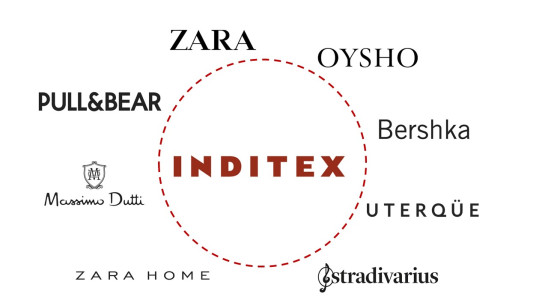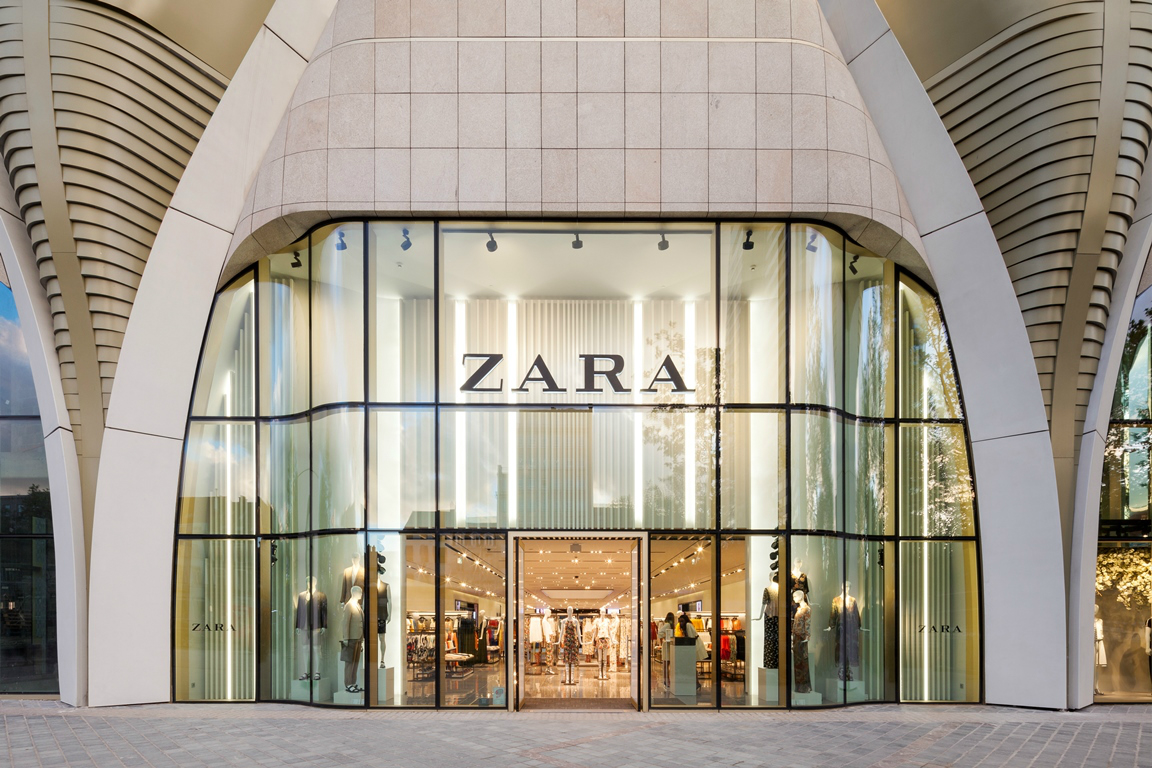Zara is the Inditex group’s flagship clothes and accessories brand. Few clothing retail brands keep up with the latest trends, are of high quality and yet, affordable. The amalgamation of all these characteristics has turned Zara, the Spanish clothing chain, into the go-to fashion brand for all.
It’s not surprising that the garments company, which started as a small shop in Spain, is now the biggest store in the world and its Founder, Amancio Ortega, the fourth richest man. The company specializes in fashion, and products include clothing, accessories, shoes, swimwear, beauty, and perfumes. In addition, Zara owns labels like Pull&Bear, Massimo Dutti, Bershka, Stradivarius, Oysho, Zara Home, and Uterqüe. The company runs more than 2,220 shops and is operating in 88 countries.

In fast fashion, Zara has continuously served as a leader focused on a highly sensitive supply chain. The customer is at the center of a dynamic business model that involves everything from the design, manufacturing, delivery, and sales.
Inditex’s Annual Financial Report for 2019: Check here
Brand Story
It all started when Ortega set up a dress-making factory, Inditex, in 1963. Ten years later, he started a small shop called Zorba in La Coruna, Spain, with a budget of about 30 Euros. Without any clear reason, he changed the name to Zara. And that’s how the world’s favorite luxury fashion brand of today was born.

It slowly expanded its empire from the city of Spain to the rest of the country and then later to Portugal. By the 1990s the store had expanded into the United States, France, and most of Europe. Today, Zara has about 6,500 outlets in 88 countries worldwide. Inditex is the world’s largest fashion group with more than 170,000 employees operating more than 7,400 stores in 202 markets worldwide including 49 online markets. The revenues of Inditex was USD 29.4 billion in 2018.
Brand Strategy
In 2018, Zara was ranked 25th on global brand consultancy Interbrand’s list of best global brands. The company has laid a strong foundation on four simple principles: beauty, clarity, functionality, and sustainability.
The key secret to Zara’s success has largely been driven by its ability to keep up with quickly changing fashion trends and showcase it in its collections with very little delay. The brand keeps a close watch on how fashion is changing and developing every day across the world. It creates new concepts based on the current styles and trends and places them in shops in a week or two.
It is through this strategic ability of introducing new collections focused on latest trends in a rapid manner that enabled Zara to overcome other competitors. It quickly became the favorite brand of the people, particularly those who want to keep up with trends in fashion.
The media also cite “freshly baked clothing” being manufactured by the brand, which endure fashion trends for less than a month or two. To “bake” their fresh fashions successfully, Zara concentrates on three areas :
- Shorter lead times
- Lower quantities
- More styles
Customer : Principle Creator of Zara
Zara’s unrelenting emphasis on the customer is at the root of the brand’s success and the heights it has achieved today. There has been a interesting tale about how Zara co-creates its products and leverages its customer’s input. In 2015, a lady named Miko walked into a Zara store in Tokyo and asked the store assistant for a pink scarf, but the store did not have any pink scarves. The same happened almost simultaneously for Michelle in Toronto, Elaine in San Francisco, and Giselle in Frankfurt, who all went into Zara stores and asked for pink scarves. They all left the stores without any scarves – an experience many other Zara fans witnessed globally in numerous Zara stores over the next few days.
7 days later, over 2,000 Zara stores started selling pink scarves worldwide. 500,000 pink scarves were dispatched – to be exact. They sold out within 3 days. How did such lightning-fast stocking of pink scarves occur?
Customer insights are the holy grail of modern business, and the more companies know about their customers, the better they can develop and compete.
Supply Chain
Here are some of the characteristics of Zara’s supply chain that underline the reasons behind its success:
Frequency of customer insights collection: Trend information flows daily into the head office database which designers use to build new lines and change existing ones.
Standardization of product information: Zara’s warehouses have integrated product details into specific meanings such that designs with simple production instructions can be prepared easily and precisely.
Product information and inventory management: The company is able to manufacture a garment with a sufficient supply of necessary raw materials by successfully handling thousands of products, trim and pattern requirements, and their physical inventories.
Procurement strategy: Around two-thirds of fabrics are undyed and bought before designs are finished so that savings can be obtained by aggregated production.
Manufacturing approach: Zara uses a “make and buy” approach–it manufactures the most trendy and riskier products (which require testing and piloting) in Spain, and outsources the manufacturing of more traditional variants with more stable demand for lowering production costs to Morocco, Turkey, and Asia.
Distribution management: Its state-of-the-art distribution facility operates with minimal human intervention. Optical reading devices sort out and deliver more than 60,000 clothing pieces an hour.
Also Read: H&M – A Brand Delivering Affordable Fashion For Everyone
Communication Strategy
It has used almost a zero advertising and endorsement policy throughout its entire existence, preferring to invest a percentage of its revenues in opening new outlets instead. The brand’s founder Amancio has never talked to the media nor has in any way advertised Zara. This is indeed the mark of a truly successful brand where customers appreciate and love the brand, which is over and above product level benefits but highly influenced by the brand experience.
The brand uses its retail location and retail shows, rather than advertisements, as core aspects of its marketing strategy. It secures very high customer traffic for its stores by opting to be in the most popular positions in a city.
It had opened its online boutique in September 2010, to tap into the new e-commerce phenomenon. The website was initially available in Spain, the UK, Portugal, Italy, Germany and France, and was extended to Austria, Ireland, the Netherlands, Belgium and Luxembourg. The online shop was popular in the U.S., Russia, Canada, Mexico, Romania, and South Korea over the next 3 years. Online shop Zara opened in Singapore, Malaysia, Thailand, Vietnam, and India in 2017. More recently in March 2018, the brand launched online in Australia and New Zealand. As of 2018, online sales grew to constitute 27% of Zara’s total global sales.
As a fast-fashion retailer, Zara is certainly aware of the potential of e-commerce and has built up a successful online footprint and high-quality customer experience.
Challenges Ahead
Mobile commerce : Zara woke up late to the potential of mobile commerce and wants to keep up fast with competitors.
Price no longer constitutes an advantage: A strategic advantage for Zara continues to be selling the new product collections at reasonable rates.
Need to develop a brand strategy: Brand communication is crucial in attracting new customers to the brand to sustain its growth. Without advertisements, Zara depends heavily on word of mouth or social media.
Conclusion: Take the lead from Zara
The Zara brand was born with a keen eye on its customer – its ability to recognize, anticipate, and deliver fashionable fashion tastes of its customers at reasonable prices.
One of the secrets behind Zara’s worldwide popularity is ethos and appreciation for the idea that no one is a stronger, genuine trendsetter than the client himself or herself – and this principle has to be expressed on a continuous basis in all of the potential marketing plans.
To read more content like this, Subscribe to our Newsletter.




Great article. Go to know so much about Zara